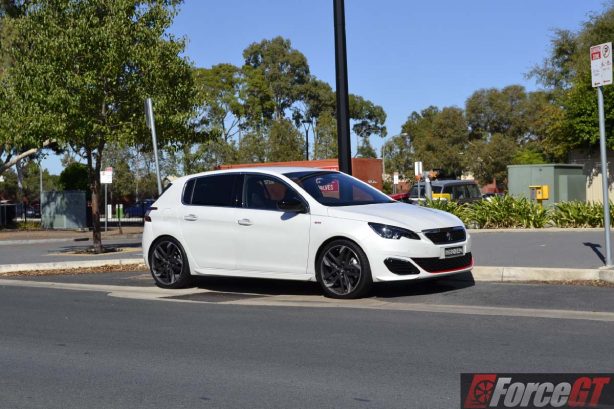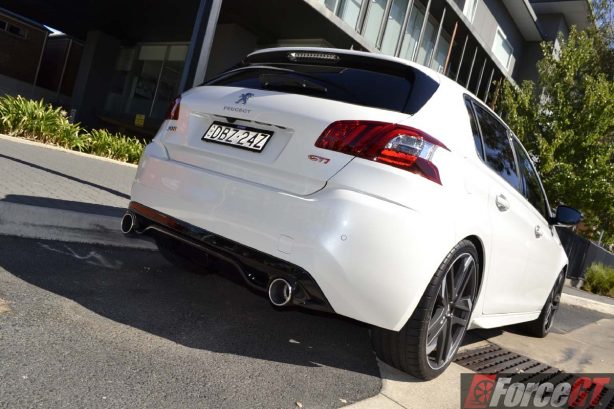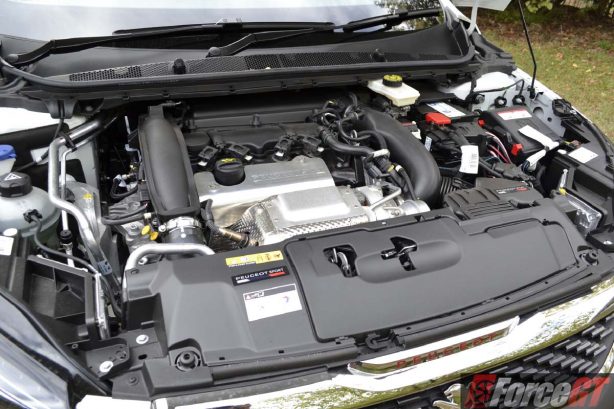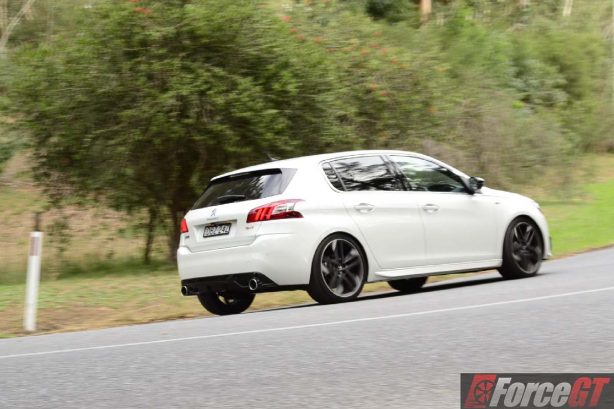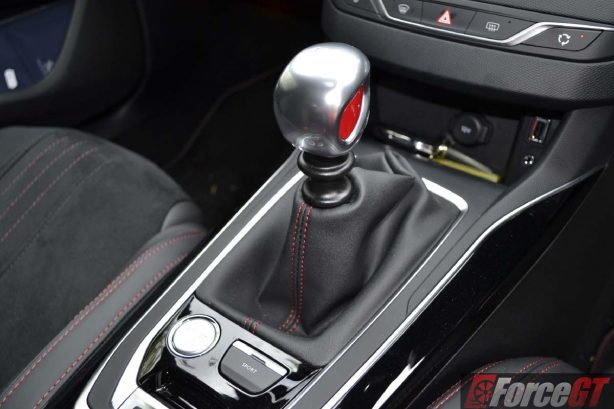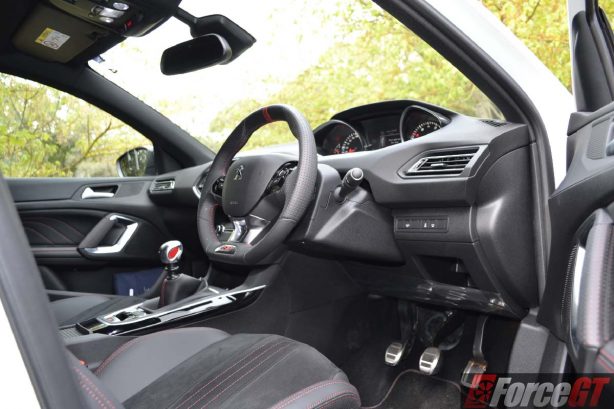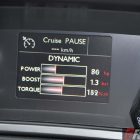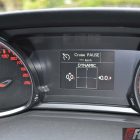It is hard to do a hot hatch review without judging the incumbent against the well-liked and accomplished Volkswagen Golf GTI. It has been the perennial hot hatch of choice for the past two generations and it is not hard to see why.
It is well rounded, reliable and relatively good value for money, making it hard for those in the market for a performance car to ignore.
However, Volkswagen isn’t the only manufacturer chasing a slice of the action, with most mainstream brands now having at least one offering of some sort. From the affordable Ford Fiesta ST to the thumping new Audi RS3 Sportback, the choices are almost bewildering to the average car shopper.
After a hiatus of 15 years, the latest entrant to re-entre the crowded arena is the new 2016 Peugeot 308 GTi.
Following the formula set by – you guessed it – the Golf GTI, Peugeot is offering two variants of its go-fast 308 in Australia – the ‘standard’ 308 GTi 250 tested here, or the full fruit 308 GTi 270.
Priced from $44,490 plus-on road costs, the 2016 Peugeot 308 GTi is at least $5,500 dearer than its closest, and more established horsepower rival, the Ford Focus ST. The gap narrows down to $3,500 against the popular Volkswagen Golf GTI Manual.
Meanwhile, the full-fat 308 GTi 270 demands at least $49,990 of your hard earned, before you are even allowed entry; making it uncomfortably close to the all-wheel drive and slightly more powerful Golf R.
Powering both variants is a high-output 1.6-litre THP four-cylinder turbocharged petrol engine developed and tuned by Peugeot Sport. It delivers 184kW of power and 330Nm of torque in the GTi 250 and punches out a potent 200kW and 330Nm in the GTi 270. Both models are paired exclusively with a six-speed manual transmission. No automatic here.
The power and drivetrain are a variation of the same unit found in the limited run Peugeot RCZ R and 208 GTi 30th Anniversary, albeit updated with a high-pressure direct fuel injection system for an even broader spread of torque and better high-range power delivery.
All 330Nm is now available from 1,900rpm, while power peaks at 6,000rpm. It pulls hard and has a pleasing consistency and gusto throughout the rev range, although the engine is plagued by mild turbo lag low down. Peugeot claims the 308 GTi 250 is capable of hitting 100km/h in 6.2 seconds. On test, we managed a best of 6.4 seconds – neck and neck with the 2015 Focus ST we tested last year and four-tenths quicker than the Mk7 Golf GTI.
However, unlike its rivals, the Peugeot’s engine sounds reserved for a sports hatch; unless the Sport button is engaged, at which point the instruments turn an angry red and the car’s soundtrack suddenly comes to life. While it may be augmented through the car’s audio speakers and sounds like a slightly better rendition of what you get from a game console, its growling, burbling noise gets better with acquaintance. Nevertheless, the 308 GTi isn’t the only one faking it, with most of its major rivals having some sort of amplified engine sound or another.
Its six-speed gearbox also lacks the slickness and mechanical definition of its counterparts’, in particular the Focus ST’s excellent 6-speed manual.
The 308 GTi sits 11mm closer to the ground compared to the standard 308 range and sports stiffer springs, uprated dampers, a 10mm wider front track and more negative wheel camber on both axles.
The stiffer suspension bushings at all four corners mean the 308 GTi handles with good precision and controlled feedback. While our entry-level model misses out on the Torsen helical limited-slip differential that is standard on the GTi 270, its handling is still crisp and precise on our challenging Adelaide Hills test route.
However, its composed and sturdy demeanour changes when you hit the Sport button on the centre console. The car becomes rather tipsy and a little frantic due to the over sensitive throttle, making modulating power a rather delicate procedure. It also firms up the quick and precise steering without bringing better feel to the table.
Our test car is shod with a set of striking, optional lightweight 19-inch alloys from the 308 GTi 270 that trim a few extra kilos from an already lithe 1,205kg kerb weight. Despite the massive wheels and low profile tyres, the GTi’s ride is surprisingly compliant around town, especially on non-adjustable dampers.
Like the rest of the 308 range, refinement and comfort is also respectable, while its tactile interior and grippy seats score highly on every day usability. The GTi’s well-placed pedals also make for good heel-and-toeing.
Another trump card up the 308 GTi’s sleeve is its fuel economy. After a week of hard driving, the car returned an impressive 8.2L/100km, beating all of its rivals at the bowser.
Verdict
Design & Comfort: 8.0/10
Performance & Handling: 7.5/10
Quality: 8.5./10
Economy: 8.5/10
Features & Equipment: 8.0/10
There’s a lot to like about the 2016 Peugeot 308 GTi 250 – its talented chassis, powerful, yet efficient engine and beautiful styling both inside and out.
While its driving dynamics is a vast improvement over the forgettable previous generation and more engaging than the clinical Volkswagen Golf GTI, it isn’t as sharp as the excellent, and cheaper, Ford Focus ST; making the extra outlay hard to justify.
Is it worth the wait? For Peugeot fans, definitely. But for the rest, there are better value and more fun to be had elsewhere.
Pros:
- Handsome styling
- Good perceived quality
- Agile handling
- Powerful and efficient engine
Cons:
- Tipsy Sport mode
- 6-speed manual could be slicker
2016 Peugeot 308 GTi 250 pricing and specification:
| Price (Excl. on-roads): | From: $44,990 As tested: $48,290* *includes: · Satin White premium paint: $1,700 · 19-inch lightweight alloy wheels: $1,600 |
| Warranty: | 3 years/100,000km |
| Warranty Customer Assistance: | 3 year roadside |
| Service Intervals: | 12 months/15,000km |
| Engine: | 1.6-litre turbocharged, direct injected four-cylinder petrol with engine stop/start: 184kW @ 6,000rpm, 330Nm @ 1,900rpm (tested) |
| Transmission: | 6-speed manual |
| Drivetrain: | Front-wheel drive |
| 0-100km/h (seconds): | Claimed: 6.2/Tested: 6.4 |
| Combined Fuel Consumption (L/100km): | Claimed: 6.0/Tested: 8.2 |
| Body: | 5-door hatchback, 5 seats |
| Safety: | 5-star ANCAP, 6 airbags, ABS with EBD, Brake Assist, ESP, hill assist, tyre pressure monitoring, reverse camera, parking sensors (front and rear) |
| Dimensions (L/W/H/W-B) mm: | 4,253/1,804/1,446/2,620 |
| Boot Space (L): | 470-1,309 |
| Kerb Weight (kg): | 1,205 |
| Towing Capacity (kg): | N/A |
| Entertainment: | 9.7” colour touchscreen, CD player, DAB+, 6.9GB jukebox, Bluetooth and USB connectivity, satellite navigation |
Competitors: Holden Astra VXR, Ford Focus ST, Renaultsport Megane R.S., Volkswagen Golf GTI, Skoda Octavia RS
 ForceGT.com Car News, Car Reviews, Video Reviews, Tuning and much more.
ForceGT.com Car News, Car Reviews, Video Reviews, Tuning and much more. 